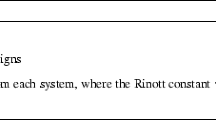Abstract
Designers, operators and users of multiple-device, access-control security systems are challenged by the false alarm, false clear tradeoff. Given a particular access control security system, and a prescribed false clear standard, there is an optimal (minimal) false alarm rate that can be achieved. The objective of this research is to develop a new methodology for determining this false alarm rate. A static grid estimation procedure is used to estimate the joint conditional probability density functions for the security device responses. The concept of a system response function is introduced and the problem of determining a system response function that minimizes the false alarm rate, while meeting the false clear standard, is formulated as a decision problem and proven to be NP-complete. A Greedy Algorithm and a Dynamic Programming algorithm are presented to address this problem. Computational results using simulated security data are reported. These results are compared to analytical results obtained for a pre-specified system response function form. Directions for future research are also discussed.
Similar content being viewed by others
References
Bradley, R.G. (1981) Performance estimates for personnel access control systems, in Proceedings of the 1981 IEEE Carnahan Conference on Crime Countermeasures, Lexington, KY, pp. 23-27.
Dantzig, G.B. (1957) Discrete variable extremum problems. Operations Research, 5, 266-277.
Davis, C.F., Chan, L.C. and Wormington, T.D. (1982) Measures of effectiveness for physical security system assessment, in Proceedings of the 1982 IEEE Carnahan Conference on Crime Countermeasures, Lexington, KY, pp. 177-185.
Doyon, L.R. (1981) Stochastic modeling of facility security systems for analytical solutions. Computers and Industrial Engineering, 5, 127-138.
Eglese, R. (1990) Simulated annealing: a tool for operational research. European Journal of Operational Research, 46, 271-281.
Garey, M.R. and Johnson, D.S. (1979) Computers and Intractability: A Guide to the Theory of NP-Completeness, Freeman, W.H. & Co., San Francisco, CA.
Gilliam, R.R. (1979) An application of queueing theory to airport passenger security screening. Interfaces, 9, 117-123.
Horowitz, E. and Sahni, S. (1982) Fundamentals of Data Structures, Computer Science Press, Rockville, MD.
Jacobson, S.H., Kobza, J.E. and Nakayama, M.K. (2000) A sampling procedure to estimate risk probabilities in access control security systems. European Journal of Operational Research, 122, 123-132.
Kobza, J.E. and Jacobson, S.H. (1996) Addressing the dependency problem in access security system architecture design. Risk Analysis, 16, 801-812.
Kobza, J.E. and Jacobson, S.H. (1997) Probability models for access security system architectures. Journal of the Operational Research Society, 48, 255-263.
Malotky, L.O. (1994) Introduction to the sixth international civil aviation security conference. Journal of Testing and Evaluation, 22, 235-237.
Martello, S. and Toth, P. (1990) Knapsack Problems: Algorithms and Computer Implementations, John Wiley & Sons, New York, NY.
Peyron, F., Doyon, L.R. and Hanse, J. (1983) Computer analysis of security systems, in Proceedings of the 1983 International Carnahan Conference on Crime Countermeasures, Lexington, KY, pp. 23-29.
Polski, P.A. (1994) International aviation security research and development. Journal of Testing and Evaluation, 22, 267-274.
Popova, E. and Morton, D. (1998) Adaptive stochastic manpower scheduling, in Proceedings of the 1998 Winter Simulation Conference, Washington, DC, pp. 661-668.
Ross, S. (1992) Applied Probability Models with Optimization Applications, Dover, Mineola, NY.
Simms, A.E. (1997) A stochastic approach to modeling aviation security problems using the knapsack problem. Master's thesis, Virginia Polytechnic Institute and State University, Blacksburg, VA.
Tarr, C.G. (1992) Clasp: a computerized aid to cost effective perimeter security, in Proceedings of the 1992 International Carnahan Conference on Crime Countermeasures, Lexington, KY, pp. 164-168.
Toth, P. (1980) Dynamic programming for the zero-one knapsack problem. Computing, 25, 29-45.
van Trees, H.L. (1968) Classical Detection and Estimation Theory, John Wiley & Sons, New York, NY.
Author information
Authors and Affiliations
Rights and permissions
About this article
Cite this article
Jacobson, S.H., Kobza, J.E. & Easterling, A.S. A Detection Theoretic approach to Modeling Aviation Security Problems using the Knapsack Problem. IIE Transactions 33, 747–759 (2001). https://doi.org/10.1023/A:1010945832179
Issue Date:
DOI: https://doi.org/10.1023/A:1010945832179




